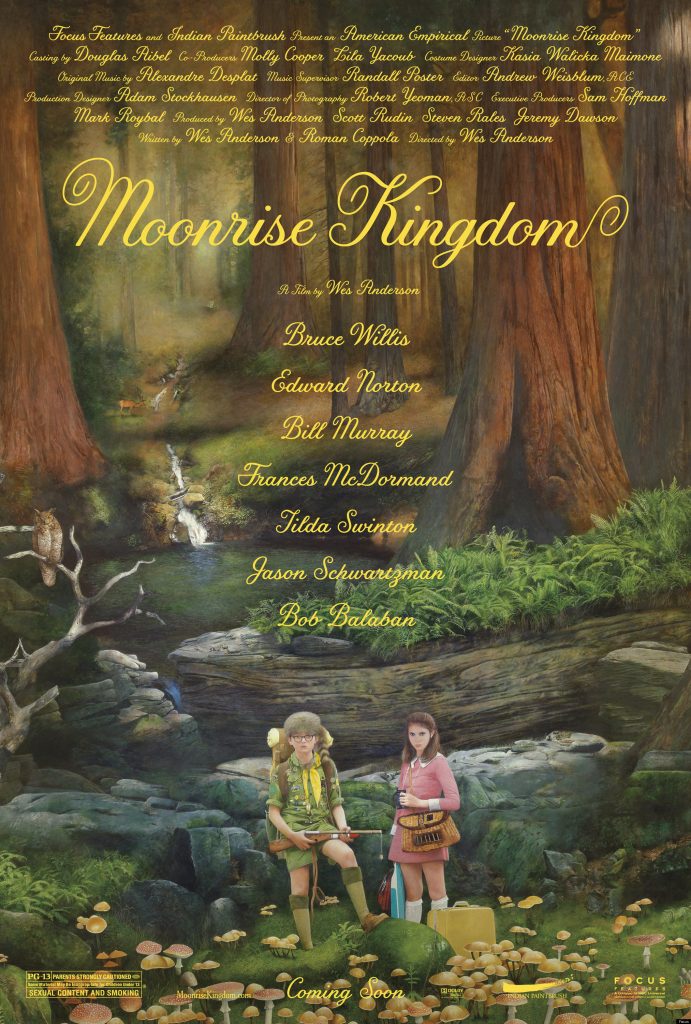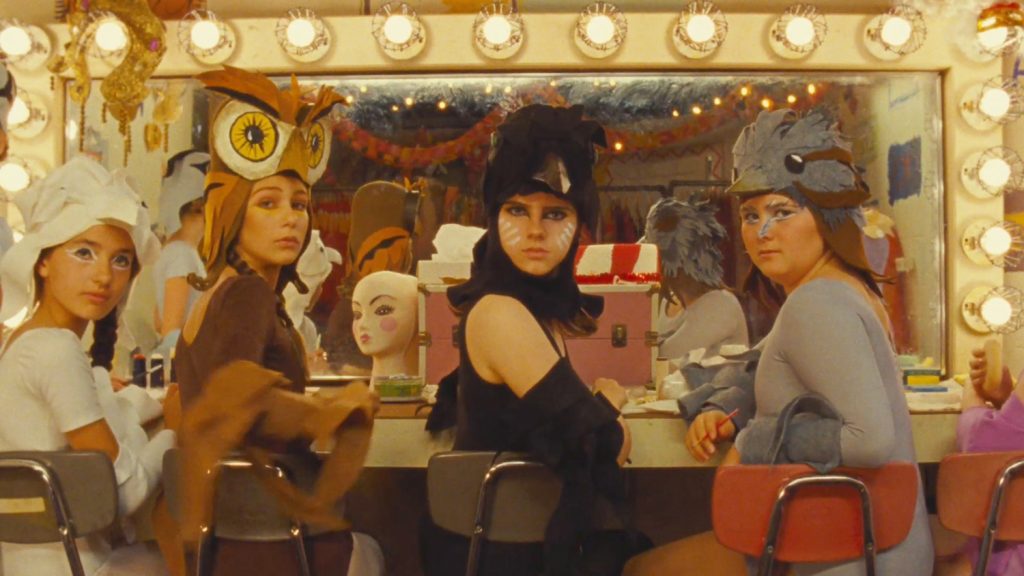Wes Anderson’s 2012 Moonrise Kingdom tells the tale of Suzy and Sam as they run away together. Our two young characters are pursued by Suzy’s family and Sam’s scout troop.
The film is comedic in a classically Anderson way, however beyond the light humour lies an examination of the flawed individual, with the film using animals to foreshadow events and destabilise adult structures. The ‘otherness’ of the animal mirrors the exclusion of Sam and Suzy, characters used to represent life at its purest, without the corruption of the adult.
Sam and Suzy’s first meet whilst she is dressed as a Raven, about to take to the stage in ‘Noye’s Fludde’, a play which recounts the biblical tale of Noah and his ark. In the bible, Noah “sent out a raven, and it kept flying back and forth until the water had dried up from the earth.” (Genesis 8.7) This is juxtaposed against the dove, another animal present in costume-form, who does return to Noah. Sam in unequivocal in his approach, disregarding the other ‘birds’, focussing upon Suzy. By placing Suzy as the raven, the film foreshadows her eventual flight from home, but also highlights her troubled nature, with the biblical reference suggesting a disobedience.
The flight which Suzy and Sam take is given reason as she reveals the book “Coping with The Very Troubled Child”. As Anderson is meticulous in his detail, the book cover was specifically designed for the film. Upon closer inspection, we see the tagline “Facts, Opinions and Misconceptions”, with the last of these suggesting the film’s apologetic admission of its failure to transparently depict the society Sam and Suzy run from. It is through the death of Snoopy, the scout camp’s dog, that these ‘misconceptions’ of a troubled individual within society are revealed.
As Sam and Suzy stand over the dead dog, she asks “Was he a good dog?”. Sam simply replies “Who’s to say? But he didn’t deserve to die.” Sam’s understanding of passing judgement erodes the immaturity surrounding his relationship with Suzy; as he asks the viewer who’s place is it to judge a dog’s character, the construct by which to measure an animal is eroded. The absence of “clear moral or ethical categories” by which to answer Sam’s question suggests a similar absence in which the child can measure the adult. [1] As we follow the two children, the film is less ready to expose the flaws of its adult counterparts, highlighting a lack of space for the child to critique the adult. However, throughout Anderson’s films the dog is a symbol for the nuclear family, such as in the Royal Tenenbaums (Buckley the dog is similarly killed). Snoopy’s death allows the film to inadvertently expose the failings of the adult (adultery of Suzy’s mother) through the destabilisation of the family and construct the childish love between Suzy and Sam not as misguided, but as that which is pure.
References
C. Ryan Knight, ‘”Who’s to Say?”: Pets in Wes Anderson’s Films’, in The Films of Wes Anderson: Critical Essays on an Indiewood Icon, ed. by Peter C. Kunze (Basingstoke: Palgrave Macmillan, 2014), p. 71.
Primary texts
Moonrise Kingdom. Dir. Wes Anderson. Focus Features, 2012.
Secondary Texts
Knight, C. Ryan, ‘”Who’s to Say?”: Pets in Wes Anderson’s Films’, in The Films of Wes Anderson: Critical Essays on an Indiewood Icon, ed. by Peter C. Kunze(Basingstoke: Palgrave Macmillan, 2014)
The Holy Bible, New Revised Standard Version, Containing the Old and New Testament (Cambridge: Cambridge University Pessy, 1994)
Further Reading
Does Wes Anderson Hate Dogs? (2012) http://www.newyorker.com/culture/culture-desk/does-wes-anderson-hate-dogs
Kate Wilson, You Might Not Like How Wes Anderson Uses Dogs in His Movies… BUT– (2014) http://barkpost.com/wes-anderson-dogs-in-films
Images
[1] http://ravenandcrowstudio.com/images/kindness/7.12.12/Moonrise-Kingdom_4.jpg
[2] Still from Moonrise Kingdom (2012)

